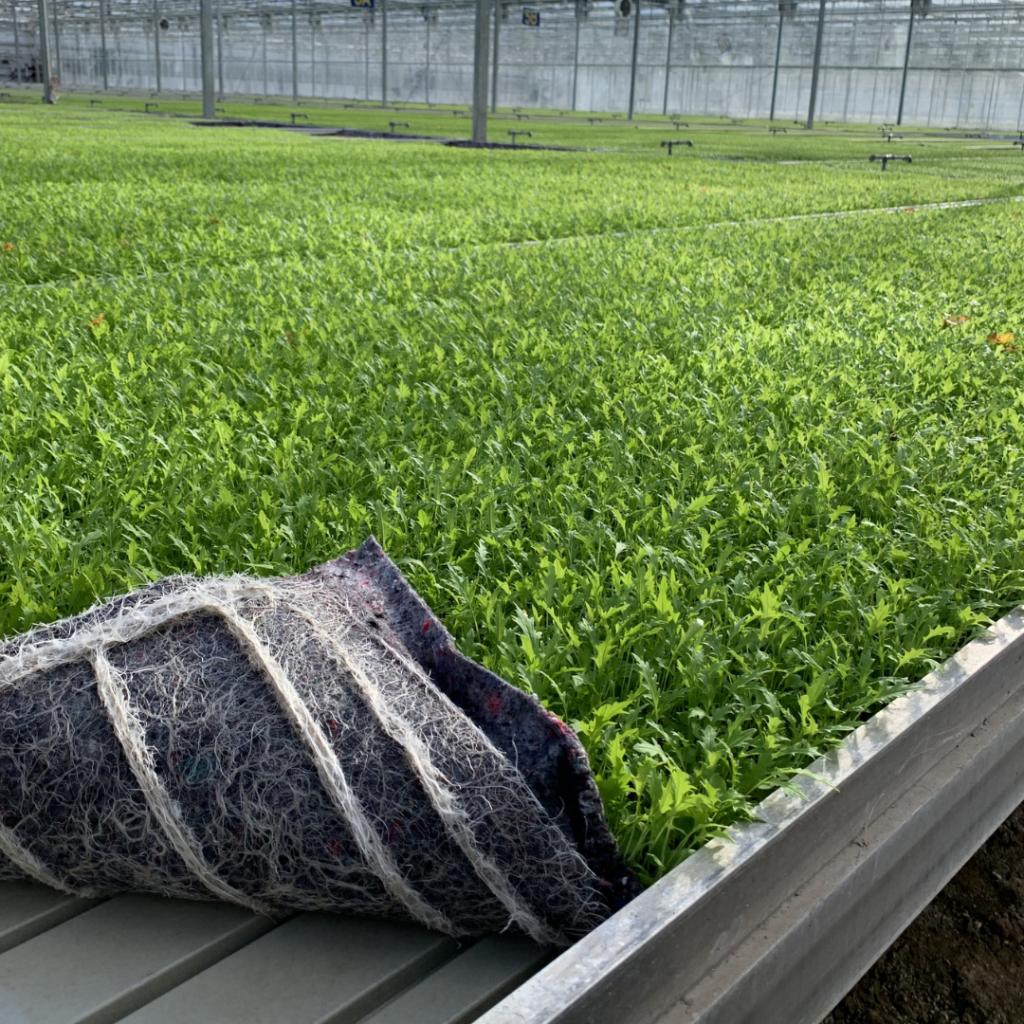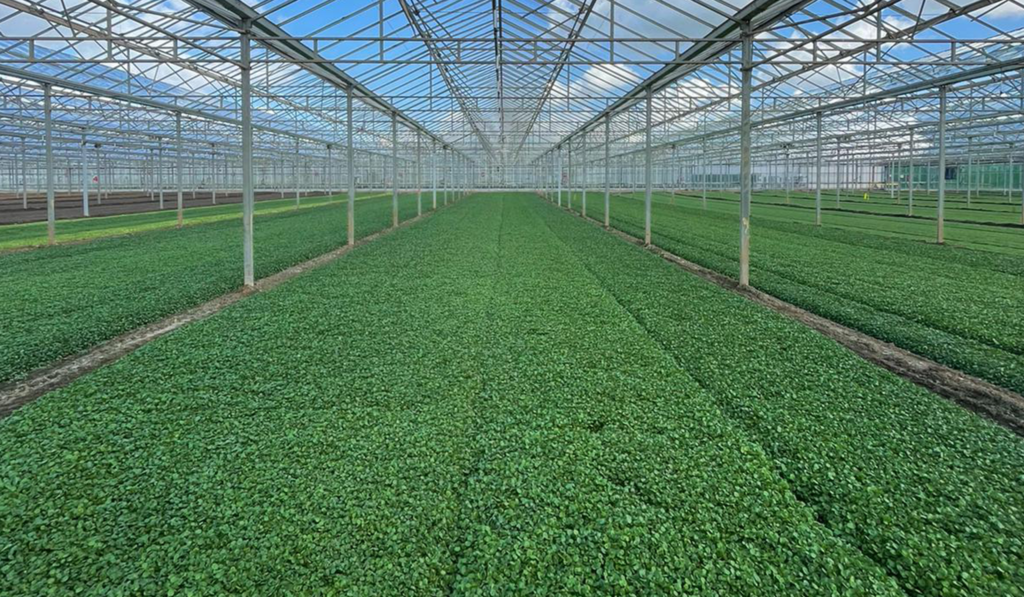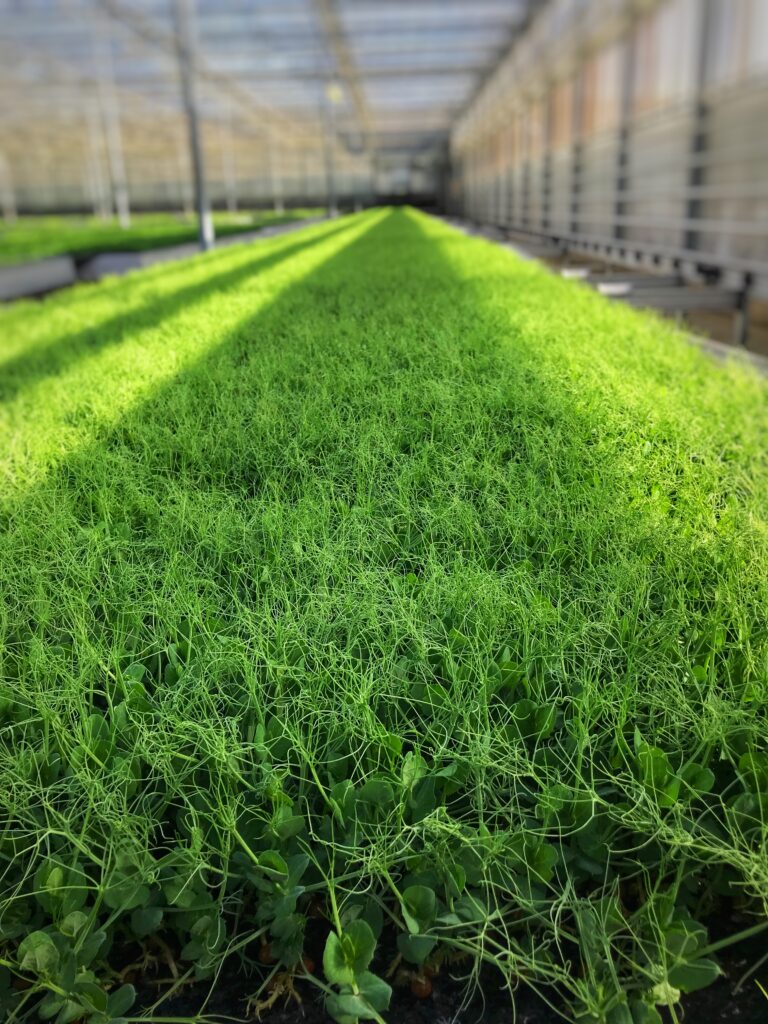
We were recently visited by Matthew Fort (@matthewfort), TV Judge on The Great British Menu, Food Writer and award-winning Author. In his blog post, he writes about our hydroponic growing process and leaves us such a glowing review – we couldn’t not share!
Hydroponic Happiness
It’s a salutary lesson. Every now and then you come across something that challenges an opinion that you’ve held for so long that it’s become a fact carved in the stone of your personal order of things.
That’s how I felt about hydroponically-grown vegetables, raised under glass on plants with their roots in water, nurtured on a carefully calibrated cocktail of ‘nutrients’. ‘Tasteless’, ‘watery’ ‘devoid of flavour or interest’ were the usual words I applied to food produced in this clinical fashion. To be honest, I was right because the tomatoes, peppers, cucumbers etc etc, usually grown in Holland, Spain and Israel deserved all of those epithets. At best they were boring’ At worst they were an insult to the natural order.
It’s easy to see why they should appeal to food retailers. The method produced millions of almost identical ‘units’, easy for picking, easy for packing, easy for pricing and with bred-in shelf life. The only quality missing was flavour. But who cared about that? Certainly not the consumer, schooled in the values of flawless appearance, convenience and price.
Then – and here I draw a deep breath – I came across William Boers manning his stall at the Stroud Farmers’ Market. It was the sea kale that first caught my eye, a hayrick of the stuff, eggy yellow, with a little frill of a leaf at the top. I’ve already written a blog about my excitement at coming across this long-forgotten vegetable, a favourite of Victorian gardeners. Indeed, I was so transported that I forgot to mention the hummocks of youthful salad leaves, containers of edible flowers and boxes of variegated tomatoes – all shockingly out of season – laid out alongside.

William Boers turned out not to be your average son of the soil. He’s a young fellow, the third generation of the Boers family in the thick of the business founded by his grandfather, who had emigrated to England from The Netherlands. And William’s as passionate about growing micro leaves, herbs, edible flowers and tomatoes in the dreaded hydroponic system under glass as his grandfather and his father. Indeed, he’s so passionate that he persuaded me to visit the glasshouses of Westlands in the Vale of Evesham to see how it’s done.
I remember the Vale of Evesham back in the day, before there were motorways. Whenever the Fort family headed north or in the reverse direction in summer my mother or father would contrive to pass through the Vale so they could buy bundles of asparagus, punnets of strawberries or boxes of plums. It’s always been a fertile area, one of the market gardens of England.
In those days much of the produce was also grown under glass, but at least it was rooted in the soil. These days, the glass is still there, but the earth has been replaced by mats made of various growing mediums, and the skill lies not in keeping the earth fertile, but in providing ‘light, warmth, nutrients – everything a plant needs to be healthy and productive and the best version of itself’ as William put it.

The scale is colossal. None of those tasteful wood and glass constructions you see in house and garden magazines, or even medium-sized houses of glass. These are palaces of glass, cathedrals of glass, made according to the latest Dutch technology (the Dutch are the acknowledged world experts in the design and construction of greenhouses), stretching away into the distance, with prairies of pea shoots, different varieties of sorrel, micro leaves, herbs, edible flowers in all their trim, tidy, even perfection. This is a computer controlled, nutritionally perfect, environmentally sustainable plant heaven. Even the water that falls on the angled roofs is channelled into ponds for use somewhere along the line.
Take peas shoots, for example, a relatively recent addition to the home cook’s arsenal. They’re grown from special pea seeds on carpets of recycled clothing lining movable tables. The method’s not unlike the mustard and cress I used to grow on blotting paper at school. Once they’ve got to the approved height, the tables can be shunted over to the cutting machine, where the carpets are shorn of the shoots, that tumble onto a conveyor belt off to be packed. It’s a neat, clean process.
Ah, but do the pea shoots taste any good? Well, yes they do. I have mixed views about pea shoots, if I’m honest. They’re too often used by way of eye distraction rather than as an integral part of a dish, but if pea shoots you need, then Westlands pea shoots actually taste markedly of pea.

The same goes for the sorrels, cresses, samphire, agretti (aka monk’s beard), my beloved seakale (growing quietly in the dark in another part of the site), and all the rest. Even the micro leaves and herbs actually pack a proper punch of proper flavour in their gleaming, tiny perfection.
And as for the tomatoes, red, green, yellow or black blushed, William says they ‘stress’ the tomato plants by changing their diet, the cocktail of nutrients they’re fed on, to increase their sugar levels and flavour. To my tastebuds, they didn’t quite have the intensity and variety of those you find in an Italian, Spanish or French market, they’re still a very acceptable substitute until mine grown outside by more orthodox methods come along in about September. When I mentioned this to William, he told me they were constantly working with other growers, seed companies and the like to find better varieties of each of their current range, as well as keeping an eye open for new products.
I’ve always thought I’d be faced by this dilemma sooner or later. I judge the foods I eat by flavour and only flavour. Visual perfection and productivity can go hang, but if the food industry could come up with a tomato or lettuce or pea or broad bean that tasted more of tomato,/lettuce/pea/or broad bean than the conventional variety, I’d have to abandon the moral high ground and tuck into the scientifically improved version with gusto.
Now Westlands have started me off down this particular path. I’m not claiming that my conversion is quite on the same level as St Paul on the road to Damascus there is now light where before there was darkness.
Read the full blog post on hydroponic growing here at Westlands UK on Matthew’s site here.
Hydroponic Growing at Westlands
You can find out more about our hydroponic growing process on our sustainability page, here.
